Costa Rica Packing List
Travelling to Costa Rica is a big decision. It takes time, effort, and knowledge where you’re going to go. Packing is yet another story. Knowing what to bring? How much? And why? It is hard. Firstly, we will examine the top things to bring to Costa Rica. Don’t forget to make a list so you don’t forget anything for your big trip!

General items on your Costa Rica Packing List:
- Hiking Boots
- Sandals
- Credit Card or Traveler Checks
- Daypack (fanny pack, backpack, etc.)
- Water bottle
- Passport or Birth Certificate and three copies – taking copies means you can leave the more important items in a safe and use the copy while you travel instead
- Driver’s License
- English to Spanish Dictionary or Translation App
- Camera
- Travelers Insurance
- Drugstore Items (toothpaste, soap, lotion, razor, hand sanitizer, etc.) Pharmaceuticals can be costly in Costa Rica.
Packing for the Beach:
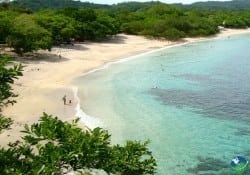 Beach time! Are there any better words in the English language? Costa Rica is known for its iconic beaches, especially along the Guanacaste shores. One thing to always keep in mind is that the dry season in Guanacaste brings a fierce sun with it and only factor 50 + sunblock will do. Also, note that even through the dry season will be sunny and wonderful, Guanacaste has the least amount of rainfall in the whole country. So even the rainy season can be an okay time to travel to these parts.
Beach time! Are there any better words in the English language? Costa Rica is known for its iconic beaches, especially along the Guanacaste shores. One thing to always keep in mind is that the dry season in Guanacaste brings a fierce sun with it and only factor 50 + sunblock will do. Also, note that even through the dry season will be sunny and wonderful, Guanacaste has the least amount of rainfall in the whole country. So even the rainy season can be an okay time to travel to these parts.
If you plan to travel to the Caribbean Coast keep in mind that, the dry season and rainy season are different here. The dry season in Limon will be the months of August, September and October, exactly when there is more rain in the other parts of the country. Note that Limon has a Caribbean climate and even during the dry season, rain can be possible and the climate is hot and humid throughout the year.
- Sunglasses
- Swimsuits
- Wear lights clothes like shorts, tank tops and shirts
- Beach Towel
- Hat
- Sunscreen (water proof if you plan on doing lots of swimming)
- Waterproof bag for your cell phone
Packing for the Mountains/Central Valley:
 While Guanacaste beaches are known for being perpetually sunny, the Central Valley as well as higher elevations can be a bit more unpredictable. If you are traveling to a cloud forest like Monteverde, for instance, you will have to pack for all occasions including the cold. The dry season as well as the dry season will be rainy in these parts. During the day you can often get away with wearing a t-shirt during the dry season, especially when you hike through the wet Monteverde jungle, but the rainy season and even the evenings during the dry season can be very chilly indeed.
While Guanacaste beaches are known for being perpetually sunny, the Central Valley as well as higher elevations can be a bit more unpredictable. If you are traveling to a cloud forest like Monteverde, for instance, you will have to pack for all occasions including the cold. The dry season as well as the dry season will be rainy in these parts. During the day you can often get away with wearing a t-shirt during the dry season, especially when you hike through the wet Monteverde jungle, but the rainy season and even the evenings during the dry season can be very chilly indeed.
- Light rain jacket or rain poncho and umbrella
- Sweater/Light Jacket
- Long Pants and long-sleeved shirts (night time can be cold)
- Waterproof bag for your cell phone
- Clothing and boots comfortable for Hiking, Touring, etc. Never mind the season, make sure you have waterproof boots for extra comfort or bring along a spray to water proof them along the way. Hiking is far more pleasant with dry feet!
Don’t forget bug repellent!
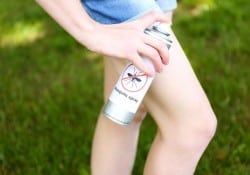 When traveling to a tropical destination, one of your first concerns might be how to ward off mosquitoes, ticks and other insects that might cause us harm. Let us inform you about the best bug repellents out there and how to avoid being bitten.
When traveling to a tropical destination, one of your first concerns might be how to ward off mosquitoes, ticks and other insects that might cause us harm. Let us inform you about the best bug repellents out there and how to avoid being bitten.
DEET-based bug repellent
DEET has often been noted as the most effective component to combat mosquitoes. The higher the DEET content is, the more effective. The CDC (Center for Disease Control and Prevention) recommends a repellent containing at least 20% of DEET. For safety precautions, make sure not to use a product with a level higher than 30% on children.
Which product to use is based on preference but one of the most commonly used bug repellents is OFF, containing both DEET and Picaridin.
Is DEET always effective?
It may surprise you to learn that despite its excellent reputation, DEET based bug repellent may not always be the best choice. If you are planning on visiting Corcovado National Park, you may encounter Purrujas (no-see-ums). Purrujas are not affected by DEET. Use Skin So Soft to keep insects away!
The downsides of using DEET
Although advertised as a miracle product, the heavy ingredients used in DEET products could, after frequent use, cause skin irritation and in some extreme cases even respiratory or neurological problems. If you will be traveling for a longer period of time and need to use bug spray on a frequent bases, it may be best to consider more natural alternatives to keep yourself safe.
Essential oils have been proven effective in warding off mosquitoes and other insects. Next to the above mentioned Skin So Soft, Lemon Eurcalyptus Essential Oil is the best natural option out there. Keep in mind it is only half as effective as products containing DEET and oils with a higher concertation of PMD will be more effective in preventing bites.
Other tips
Other than packing the right kind of bug repellent, keep these tips in mind as well.
- Wearing long sleeved shirts and pants. It may not always be comfortable to wear in a tropical country, but you can also purchase sleeves separately that are made of thin, airy material and can also protect you against sun burn.
- Try to stay clear of stagnant water. This is where mosquitoes breed prolifically. In some cities and towns this can produce problems during rainy season since the drainage is not always the best quality in Costa Rica.
- In a tropical country like Costa Rica mosquitoes are present all year round, but more so during rainy season.
- Dusk and dawn are the most active time for the mosquito. This might put a damper on a nice evening sitting on your balcony enjoying the sounds of the jungle. Make sure you protect yourself with bug repellent as well as a long sleeved shirt and pants.
Check out our safety and mosquito articles for more information.
Packing for Costa Rica – Where do I start?
Now that you have all your Items. How do you pack when Traveling to Costa Rica?
- Tip number one is to have a good suitcase, not the one that has been sitting in your closet for 20 years. A good suitcase for traveling has durable zippers, many pockets and preferably wheels, four if possible.
- Tip number two: Pack lite and bring the basics. You think you need your whole closet, but that’s not always necessary. For example, you will find that most of the time you probably won’t use the five pairs of jeans you packed, especially if you’re going to the beach areas.
- Thirdly, use space savers. Compression bags are a lifesaver. What was once a huge stack of clothes will compress into half the size, and best of all it keeps everything dry. Also pack your creams, toothpaste and any liquid item in ziplock bags. The worst is finding a small explosion of cream in your suitcase. Pack things into your shoes, and try to use up all the space in your suitcase. Packing cubes or dividers are perfect for organizing your bag.
- Fourthly, label and take pictures of everything. Put your name on your suitcase and make it colorful. Make multiple copies of your passport, license, health cards, travel visas, and travel insurance documents.
- Lastly, Tip number five: The airplane. Once you’re finally on the plane, you will thank yourself for packing a snack, mixed nuts, chips, dried fruit, etc. And it doesn’t hurt to upload the best movies or music to your devices. Also, don’t forget your travel pillow.
 For your information!
For your information!
Okay, you made it, you are here, and you have finally arrived at your hotel. Your awesome trip can begin! Now what?
- Don’t Forget Traveler’s Insurance.
- Costa Rica uses the same systems as the rest of North America. That means you can plug in all your normal electronics here. For example, phones, laptop, hairdryer, and so on.
- Money.Exchange rates are best at local banks; they widely accept US Dollars. Traveler’s checks are useful, but a 2-5% fee may be charged. Credit cards are widely used, the new tap feature on cards is also just starting to be implemented.
- Phones are usable here, but they do have to be unlocked from your previous phone company.
- The water is safe to drink in Costa Rica and you don’t have to shop for bottled water continuously. This saves room in your luggage and also means you won’t add to the huge pile of plastic waste! Do keep in mind that the water is sanitized with chlorine, like some places in the States. The levels are relatively high so make sure you buy plenty of water when you are here if you are sensitive to that.
- Using GPS is great. Favorite apps to use here are Waze or Google Maps. Asking for directions can be difficult, refer to our Renting a Car in Costa Rica Article.
- Language.Costa Rica’s official language is Spanish, so it is recommended to brush it up a bit. Many locals do speak at least a little English and all hotels/resorts should have at least one person at the front desk speaking English.
In conclusion, the best things to bring to Costa Rica is your common sense. Don’t flash valuables on the street and don’t panic when you lose them. And stick with us, we know Costa Rica. The My Costa Rica team lives and breathes these streets, some of us even grew up here. Now you should be prepared for anything for Traveling to Costa Rica!
Read our Privacy Policy - Sitemap.


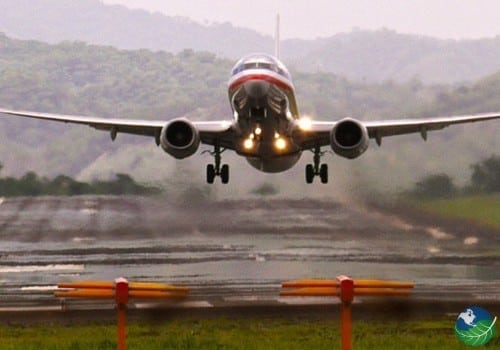 For your information!
For your information!






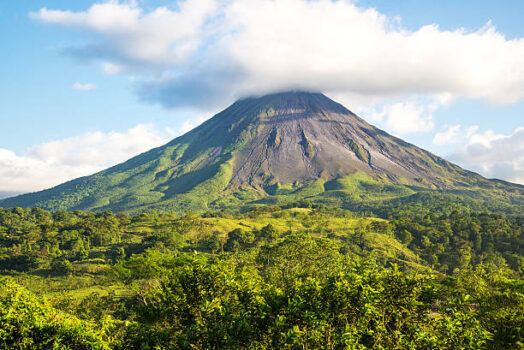
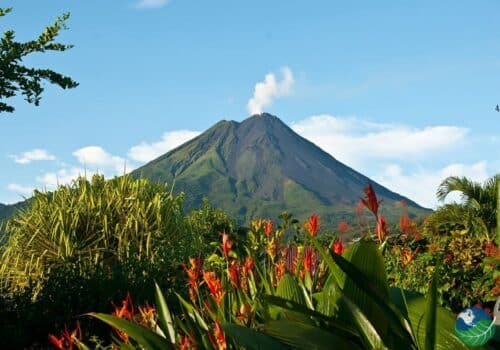


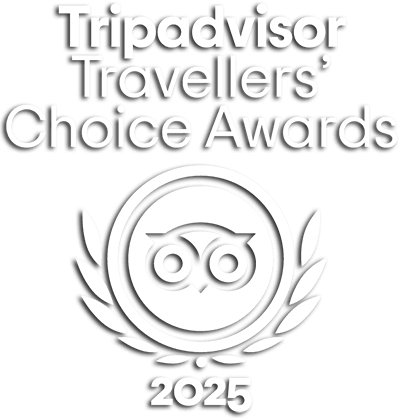

Follow Us